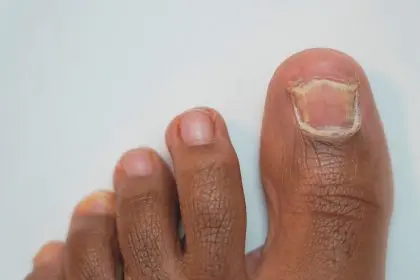A mini-stroke might seem like a close call that passes quickly, but what happens next often catches patients completely off guard. While medical professionals focus on preventing future strokes, they rarely discuss the lingering effects that can dramatically change someone’s life for months or even years afterward.
The reality is far more complex than most people realize. More than half of mini-stroke survivors find themselves battling persistent exhaustion that doesn’t improve with rest, sleep, or time. This isn’t ordinary tiredness – it’s a profound fatigue that can make simple daily tasks feel overwhelming and transform once-active people into shadows of their former selves.
Understanding what really happens during a mini-stroke
- Blood flow gets cut off: A transient ischemic attack occurs when blood supply to part of the brain becomes temporarily blocked, usually by a small clot or narrowed blood vessel.
- Symptoms appear suddenly: People may experience weakness, numbness, difficulty speaking, vision problems, or confusion that seems to resolve relatively quickly.
- Normal function returns: Unlike full strokes, the blockage clears within minutes to hours, often leaving no visible brain damage on medical scans.
The temporary nature of these events has led many to believe they’re harmless warning shots that cause no lasting damage. This assumption has shaped how medical professionals approach treatment and what information they share with patients about recovery expectations.
The exhaustion that won’t go away
What medical professionals don’t always explain is that 61% of mini-stroke patients develop significant fatigue problems almost immediately after their event. Even more concerning, 53.8% of these individuals continue struggling with debilitating exhaustion a full year later.
This fatigue isn’t the kind that improves after a good night’s sleep or a relaxing weekend. Instead, it represents a fundamental change in how the body and brain process energy, potentially linked to cellular changes that occur during the temporary oxygen shortage of a mini-stroke.
The pattern is predictable and troubling. People who experience fatigue in the early weeks after their mini-stroke are far more likely to continue battling these problems throughout the following months. This suggests that early exhaustion might serve as a warning sign for long-term recovery challenges that medical teams rarely address.
How persistent fatigue transforms daily life
- Work becomes a struggle: Tasks that once required minimal effort now demand tremendous mental and physical energy, often leading to decreased job performance and productivity.
- Social connections suffer: Persistent tiredness causes many people to withdraw from social activities, family gatherings, and recreational pursuits they previously enjoyed.
- Exercise feels impossible: Physical activities that were once routine may feel overwhelming, creating a downward spiral where reduced activity leads to further physical deconditioning.
- Mental clarity diminishes: Many survivors describe experiencing “brain fog” that makes thinking, concentrating, and decision-making more difficult than before their mini-stroke.
This type of exhaustion goes beyond physical tiredness to affect cognitive function, emotional well-being, and overall quality of life. Yet most patients leave the hospital with no warning that these problems might develop or persist.
The medical system’s blind spot
Current treatment protocols focus almost exclusively on preventing future strokes through medications, lifestyle changes, and ongoing monitoring for additional vascular problems. While stroke prevention remains critically important, this narrow focus overlooks the immediate and ongoing symptoms that can devastate patients’ daily lives.
Most patients receive discharge instructions centered on medication compliance and follow-up appointments, but little guidance about potential lingering effects they might experience. The emphasis on future stroke prevention, while necessary, leaves a significant gap in addressing present-day quality of life issues.
Healthcare providers rarely include systematic evaluation of fatigue symptoms in their follow-up protocols. Many don’t even mention the possibility that patients might experience ongoing exhaustion, leaving survivors feeling confused and abandoned when these symptoms develop.
The hidden science behind mini-stroke fatigue
- Cellular damage occurs: Even brief periods without adequate oxygen can alter how brain cells produce and use energy, potentially creating lasting changes in how neurons function.
- Inflammation spreads: The body’s response to the mini-stroke may trigger ongoing inflammation throughout the nervous system, contributing to persistent feelings of fatigue and general malaise.
- Sleep patterns change: Many mini-stroke survivors experience alterations in sleep quality and architecture, which can perpetuate and worsen fatigue cycles over time.
The temporary nature of mini-strokes has created a false assumption that they cause no permanent effects. However, emerging evidence suggests that even brief interruptions in brain blood flow can have subtle but significant impacts on brain function that persist well beyond the initial medical emergency.
Why some people recover while others don’t
The variation in recovery experiences remains poorly understood. Some mini-stroke patients bounce back to their pre-event energy levels within weeks, while others struggle with exhaustion for months or years. Several factors may influence this difference in outcomes.
Age, overall health status, the specific brain region affected, and the duration of the blood flow interruption may all play roles in determining who develops chronic fatigue. Additionally, individual differences in brain chemistry, inflammation responses, and cellular repair mechanisms could contribute to varied recovery trajectories.
Understanding these differences could help identify which patients are most likely to experience ongoing problems, but this information isn’t currently being used to guide treatment decisions or patient education efforts.
The validation patients desperately need
For countless mini-stroke survivors, persistent fatigue becomes a source of frustration and self-doubt. Family members and friends may not understand why someone appears fine but claims to feel exhausted all the time. Even healthcare providers sometimes dismiss these complaints as unrelated to the mini-stroke.
This lack of recognition and validation can lead to additional emotional distress, depression, and anxiety as patients struggle to explain symptoms that others can’t see or understand. Many begin to question whether their exhaustion is real or if they’re somehow imagining or exaggerating their symptoms.
Moving toward better care
Healthcare systems need to acknowledge and address the hidden aftermath of mini-strokes. This includes developing protocols for identifying and supporting patients who experience ongoing fatigue, providing education about potential long-term effects, and offering resources for symptom management.
Patients deserve to know that persistent exhaustion after a mini-stroke is a legitimate medical concern that affects more than half of survivors. They need access to rehabilitation services, energy management strategies, and emotional support to help them navigate their recovery journey.
The medical community’s understanding of mini-strokes is evolving, but change often comes slowly. Until comprehensive care becomes standard, patients must advocate for themselves, seek support when needed, and understand that their symptoms are real and valid.
What mini-stroke survivors should know
The message for anyone who has experienced a mini-stroke is clear: if you’re battling persistent fatigue, you’re not alone, and you’re not imagining it. More than half of people in your situation face similar challenges, and these symptoms deserve medical attention and support.
Recovery from a mini-stroke involves more than just preventing future strokes. It requires acknowledging and addressing the immediate and ongoing effects that can significantly impact quality of life. As awareness grows, both patients and healthcare providers can work together to create more comprehensive approaches to mini-stroke care that address the whole person, not just stroke risk factors.















